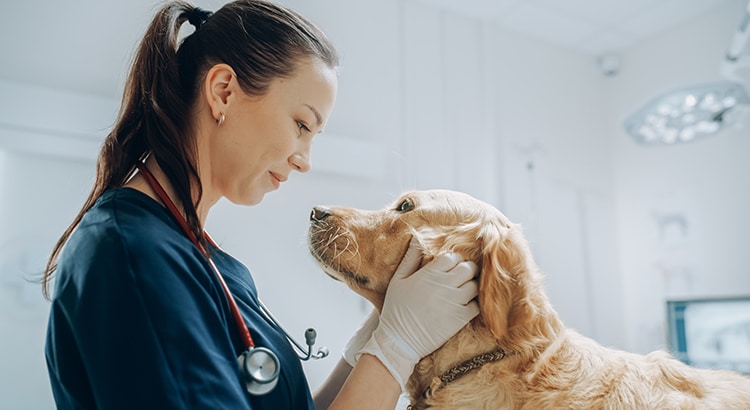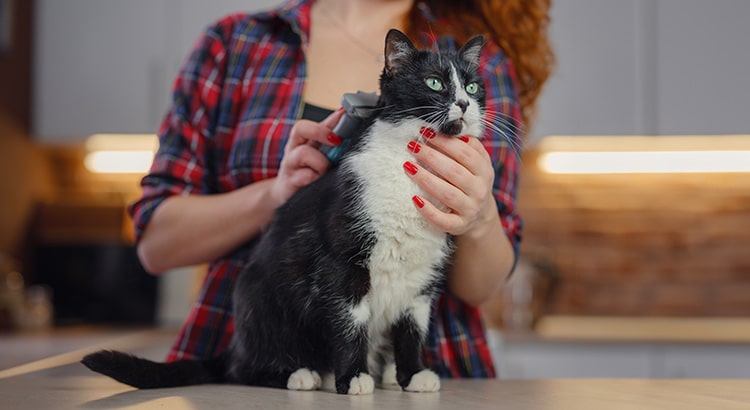
A recent question was proposed about vestibular disease in dogs. Without having heard of this diagnosis before, the concern from a pet parent opened the door to learning more. Is this a disease that has a short or long duration, what are the possible treatments, and how does a pet parent navigate the symptoms of their pet walking around with their head tilted and dizziness? Let’s take a look.
What makes up the vestibular system?
To understand what our topic is referring to, we must have knowledge of the sensory system we are exploring. The vestibular system is made up of five distinct end organs:
The utricle, the saccule, and three semicircular canals.
The utricle detects head tilts in the horizontal plane (turning the head left and right). The saccule detects linear accelerations and head tilts in the vertical plane (tilting head forward and back as in answering yes). Both are vestibular sacs of the inner ear. The three semicircular canals of each ear are interconnected tubes that respond to rotational movement.
What is the responsibility of the vestibular system?
This system control balance and works to prevent the animal from falling over. There are sensors located deep inside the inner ear that are linked to a specialized control center in the back of the brain, the cerebellum, to control balance and coordination. This system is identical in dogs, cats and humans.
Another Name for Vestibular Syndrome in Dogs: Old Dog Syndrome
What causes acute onset vestibular disease in dogs and cats?
Acute onset means the occurrence or reoccurrence of a condition spontaneously without advanced notice. Acute often also connotes an illness that is of short duration, rapidly progressive, and in need of urgent care. Causes for acute onset of this disease include:
Vestibular disease refers to a sudden, non-progressive disturbance of balance.
What are symptoms of vestibular syndrome?
A pet may show only one sign or symptom listed below or several. Here’s what pet parents should look out for:
The onset of a head tilt is a cardinal sign of vestibular disease.
How is this dysfunction diagnosed?
According to Simon Platt, BVM&S, DACVIM (Neurology), DECVN, MRCVS of the University of Georgia, the following is the diagnostic plan for vestibular dysfunction in dogs and cats:
Is vestibular syndrome painful?
While this disease may be uncomfortable for pets because it causes discomfort or motion sickness, vestibular disease is not dangerous or painful for pets.
How do you treat vestibular syndrome?
While this dysfunction usually resolves itself within two to three weeks, there can be some lingering residual effects. Treatment is dependent upon the underlying cause which can lead to the following interventions:
Another Name for Vestibular Syndrome in Cats: Feline Idiopathic Vestibular Disease (IVD)
Is vestibular syndrome life threatening in dogs and cats?
No, vestibular syndrome is not life threatening. As mentioned, recovery is anticipated within two to three weeks. However, if the symptoms do not resolve themselves then a more severe underlying disorder should be suspected, and advanced diagnostic testing should be pursued.
Signs and symptoms of vestibular disease can also be a sign of stroke in pets.
At Pin Paws, we believe in providing pet parents with access to ways to protect the health and well-being of their furry family members. Should your pet start showing symptoms of vestibular disease, our Pin Paws Plus membership provides you access to vet assistance to answer your questions via call, chat, email or video. Each membership covers all pets in the home for $24.95/month and includes:
- 1A dynamic Pin Paws tag with online profile
- 2Access to veterinarian advice 24/7 with whiskerDocs
- 3Discounted pet prescriptions and preventatives
- 4Exclusive discount codes for pet products and services
Click here for more information and to sign up today: Pin Paws Plus.




